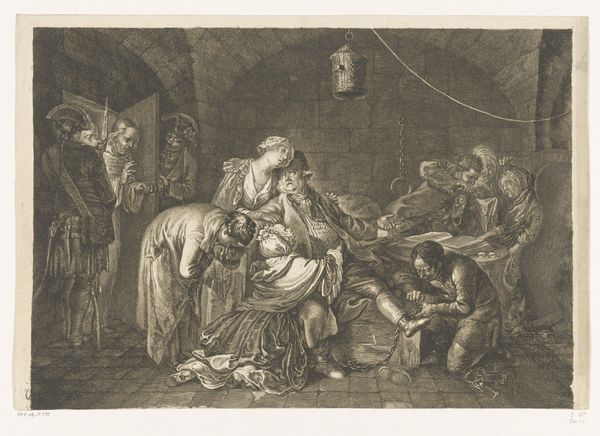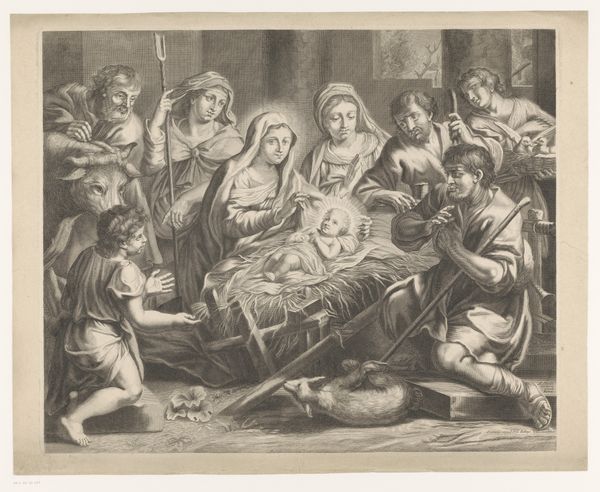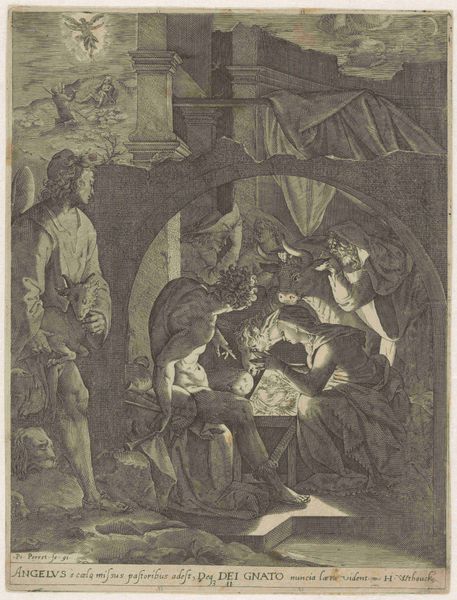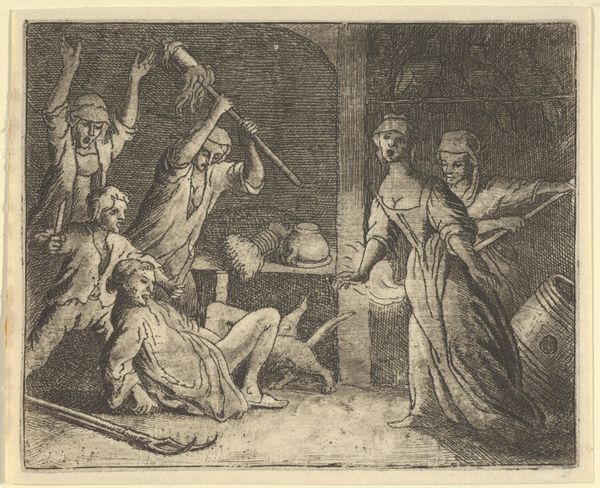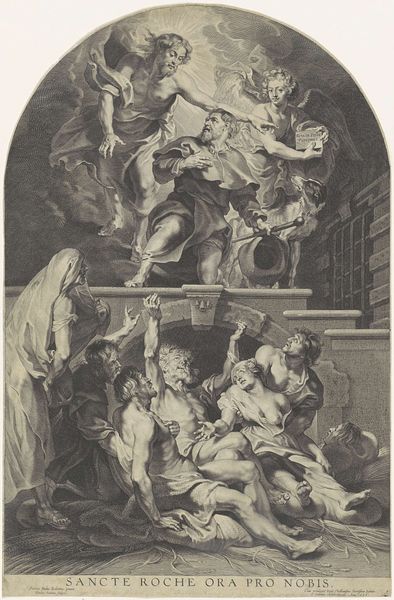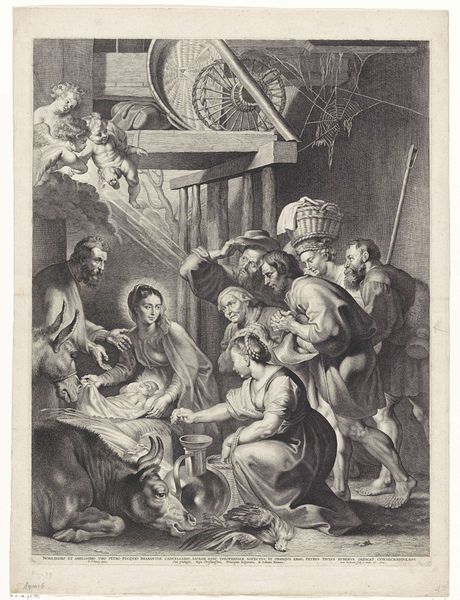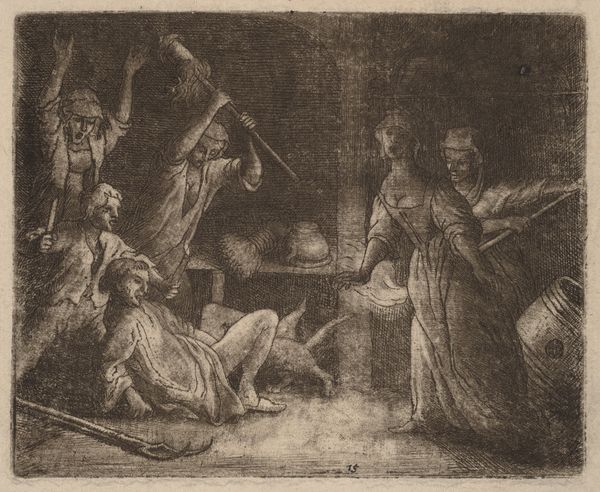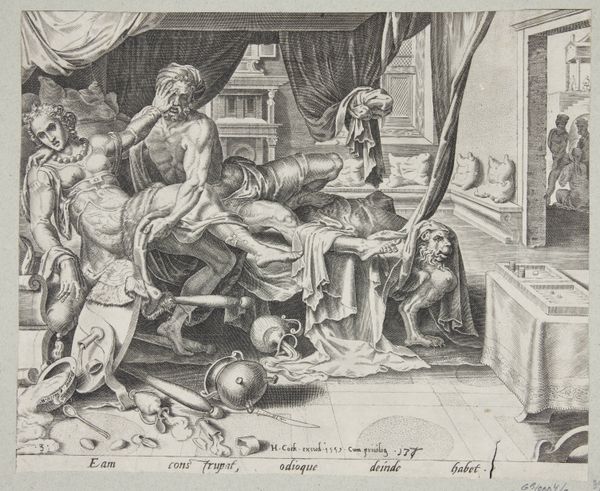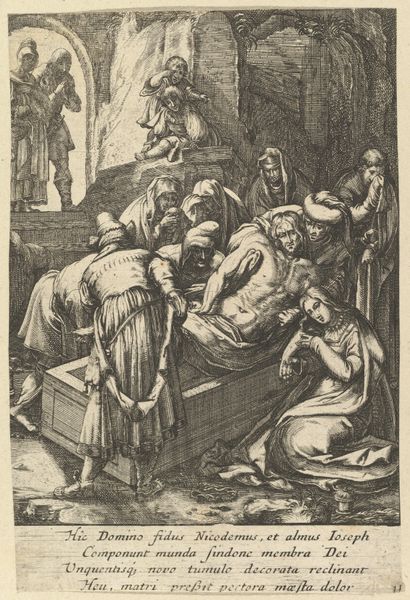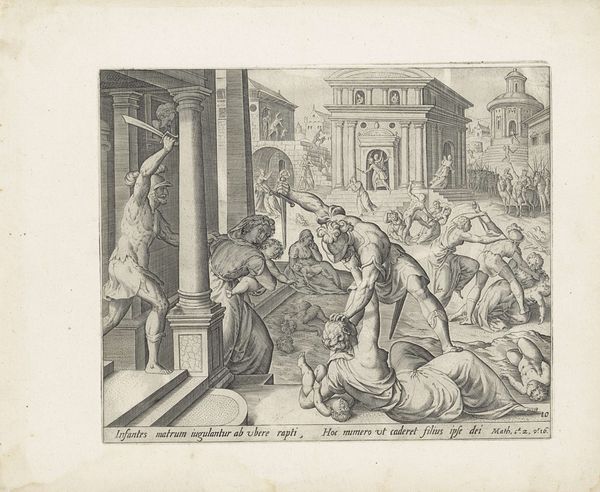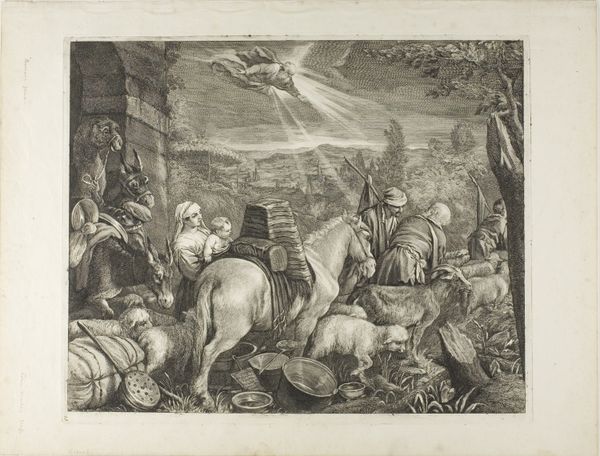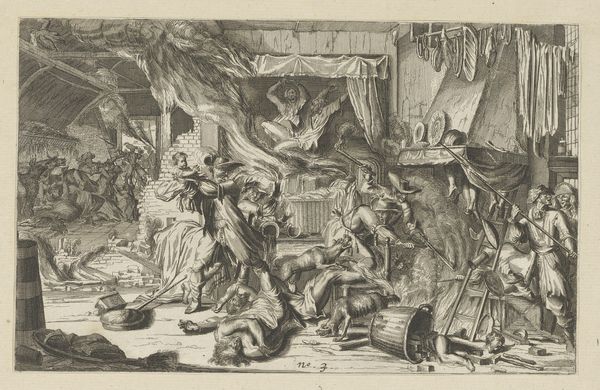
drawing, print, engraving
#
drawing
# print
#
landscape
#
figuration
#
11_renaissance
#
history-painting
#
italian-renaissance
#
engraving
Dimensions: 10 1/4 x 15 3/16 in. (26.1 x 38.5 cm)
Copyright: Public Domain
Editor: This engraving, "The Nativity," by Agostino Veneziano, dating from 1526 to 1536, has such an ethereal feel. I’m intrigued by how the light seems to emanate from the baby. What are your initial thoughts on this work? Curator: Considering this work from a materialist perspective, let’s focus on the production process of an engraving during the Renaissance. Think about the labor involved: the careful carving of the image into the copperplate, the repeated inking and pressing. Does knowing this change how you view the final print? Editor: Absolutely! It brings me closer to the artist. How would the material and tools available during the Italian Renaissance shape the aesthetic of the image? Curator: The use of metal and acid allowed for incredibly fine detail, but it also required a specific skill set, which could also explain some creative liberties the artist takes here, like rendering figures based on available models, not necessarily biblical accuracy. Does knowing that there might have been a disconnect between available skills and religious accuracy impact how we perceive this print? Editor: I think that definitely adds another layer to understanding its context and artistic process. How does the print’s dissemination—its reproduction and distribution—influence its cultural impact at the time? Curator: That's key. Engravings were relatively accessible compared to paintings. Multiple copies meant a wider audience, democratizing religious imagery and allowing for new interpretations outside of the Church's direct control. It suggests a shift in the consumption of art and ideas. Editor: So, viewing the print not just as an artwork but also as a commodity circulating within Renaissance society. That makes sense. I see how the material processes and modes of distribution are as important as the religious subject. Thanks, this reframing has been insightful! Curator: Likewise, considering its material history certainly illuminates this piece and challenges traditional art historical interpretations.
Comments
No comments
Be the first to comment and join the conversation on the ultimate creative platform.
